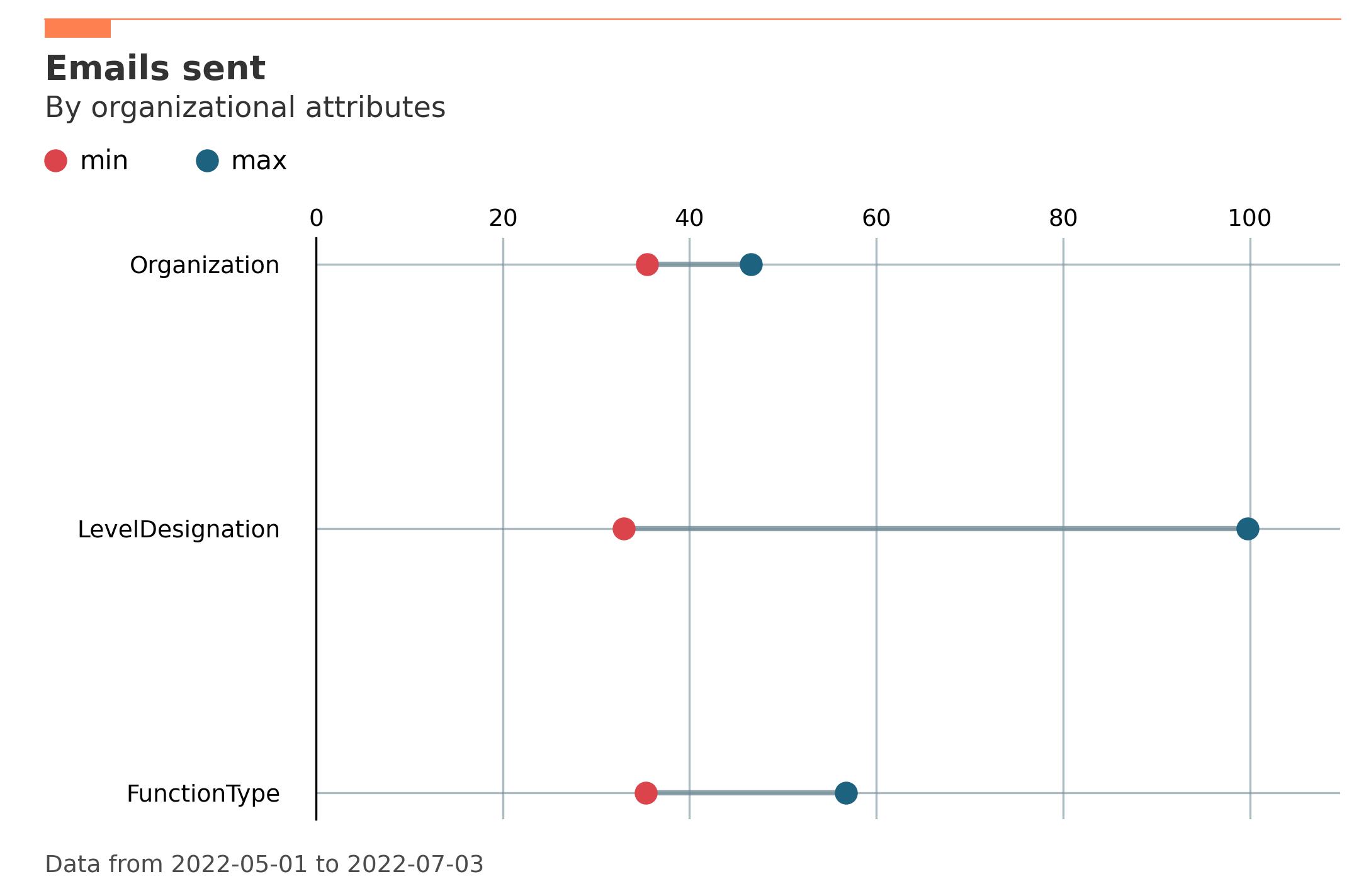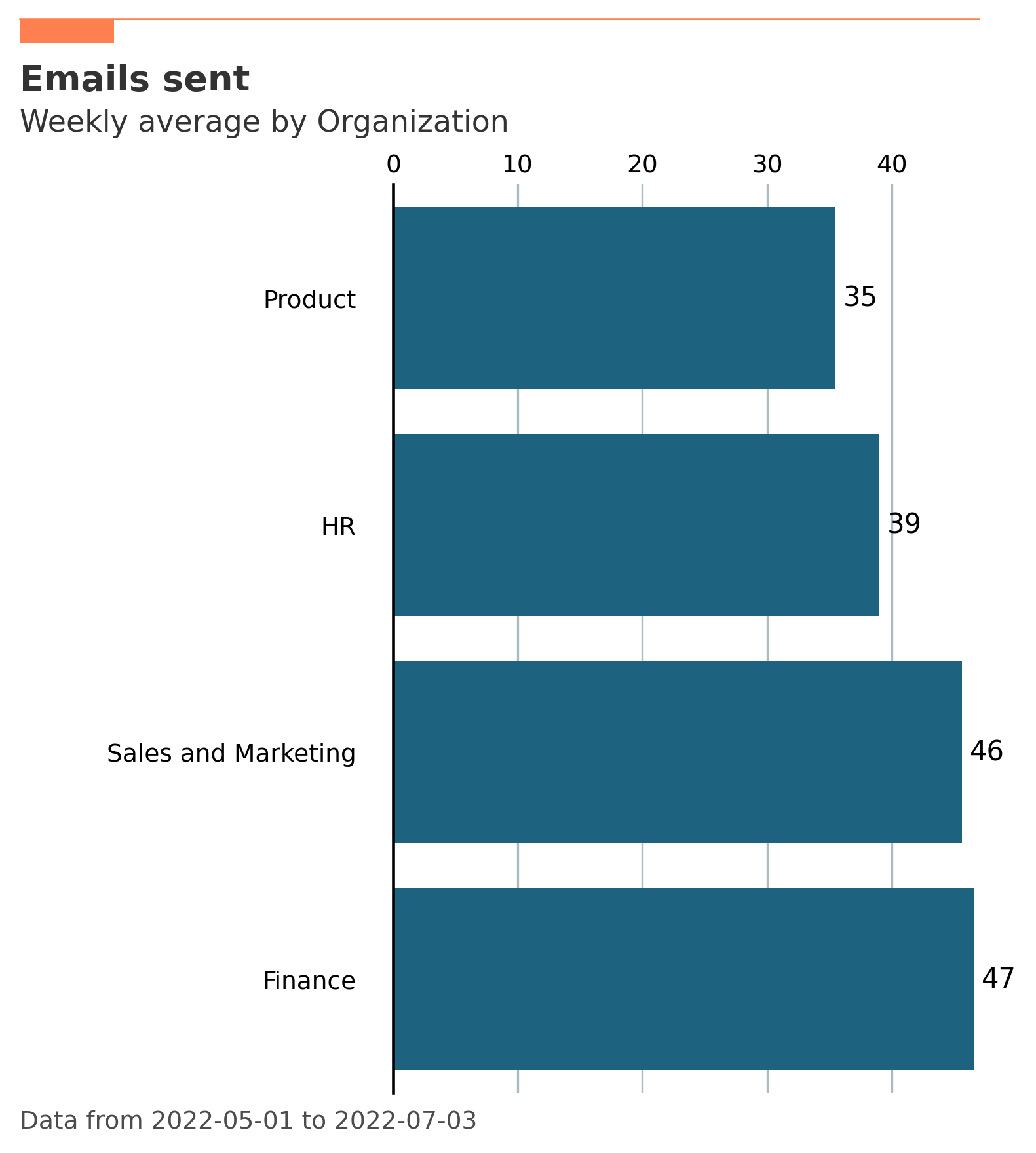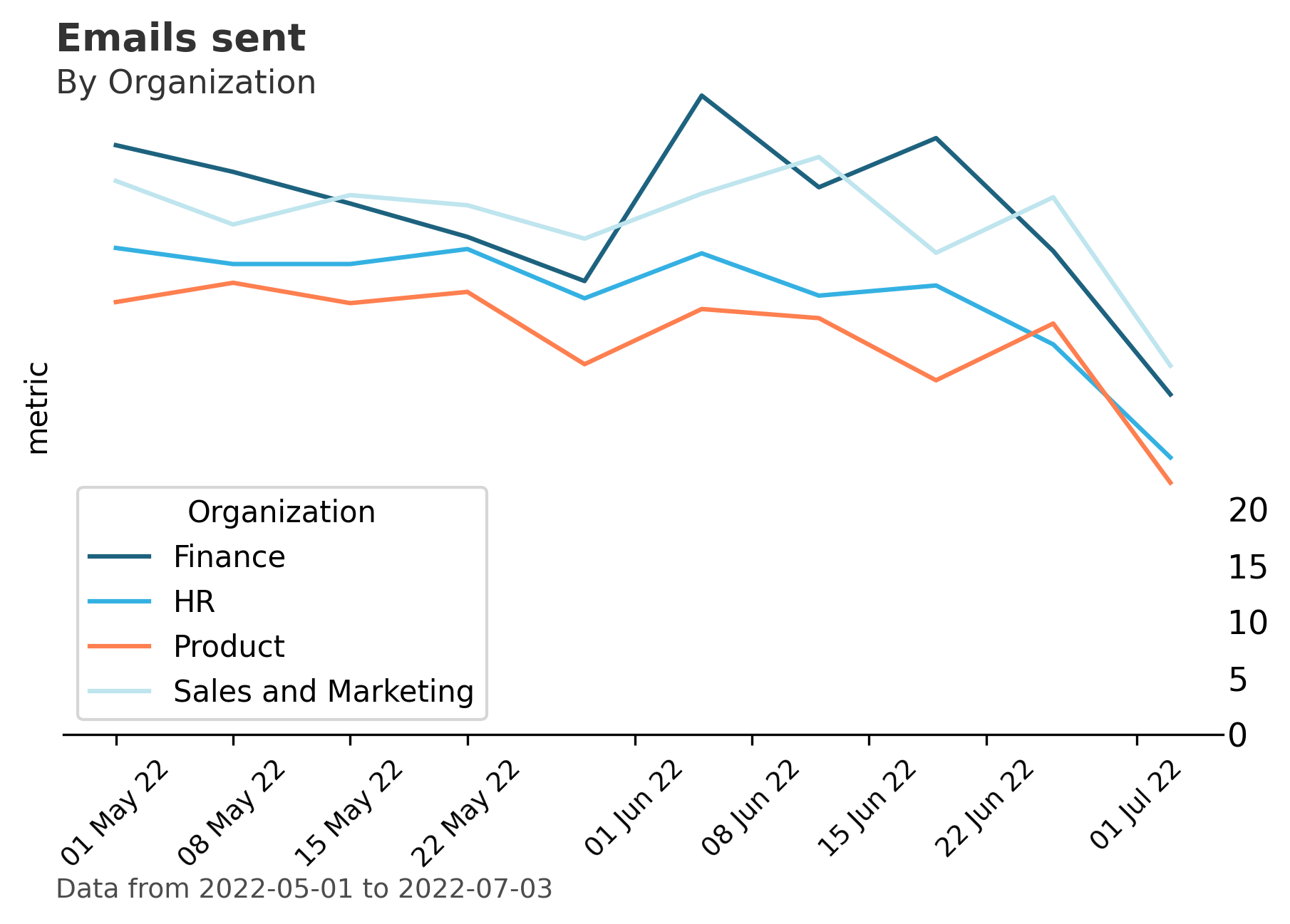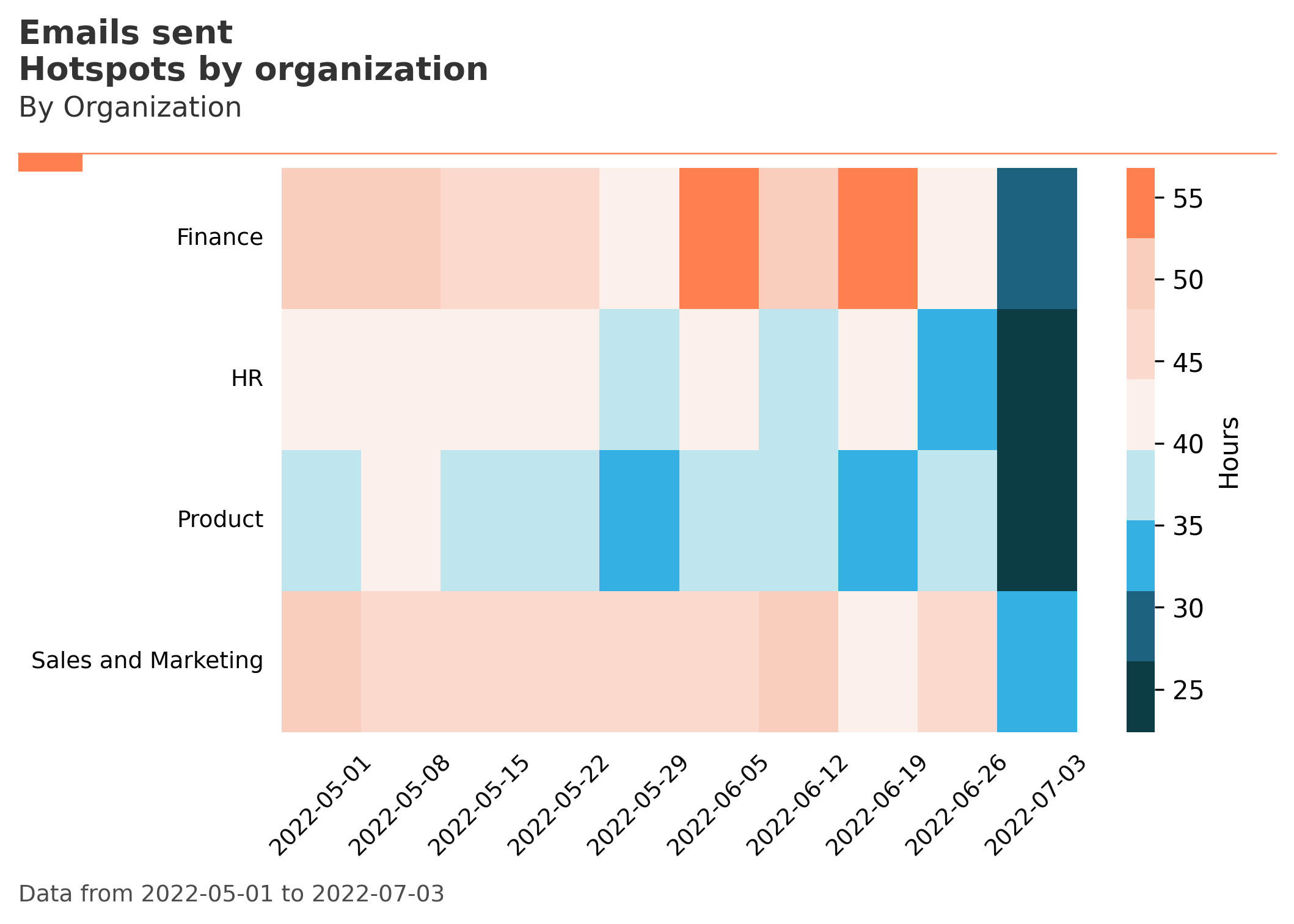vivainsights is a Python package for analyzing and visualizing data from Microsoft Viva Insights.
Access to the Viva Insights Analyst Experience is required. With this library, you can generate visualizations and compute analyses in a way that adheres to the analysis best practices of the Viva Insights query outputs.
This library is available on the Python Package Index (PyPi). For users who prefer R to Python, we recommend the R library counterpart which mirrors the design of the Python package.
Installation¶
You can install vivainsights from PyPI using pip:
pip install vivainsights
To upgrade to the latest version:
pip install --upgrade vivainsights
If you want to install with optional dependencies for development or documentation, you can use:
pip install vivainsights[dev]
To get started, we recommend checking out the demo Jupyter notebook and the code examples below. You can also find more details in our GitHub repository.
How to use¶
Once confirmed that the library is installed, you can load the package with:
import vivainsights as vi
Typically, you will require Analyst access to Microsoft Viva Insights that will enable you to download a Person Query as a .csv file, configured to your specific needs. For ease of testing and exploring the package, we will have some demo datasets in vivainsights that you can load to test out our functions:
pq_data = vi.load_pq_data() # load and assign in-built person query
mt_data = vi.load_mt_data() # load and assign in-built meeting query
Functions like create_bar() make exploring population averages easy:
# visualize averaged metrics per group (using person-averaging)
out_plot = vi.create_bar(data=pq_data, metric='Emails_sent', hrvar='Organization', mingroup=5)
vi.export(out_plot) # display plot interactively
out_tab = vi.create_bar(data=pq_data, metric='Emails_sent', hrvar='Organization', mingroup=5, return_type='table')
print(out_tab) # print summary table to console
Most functions come with an option to generate a matplotlib figure object or a summary table in the form of a Pandas DataFrame, which can be specified with the argument return_type. Once these output objects are generated, they can also be copied to clipboard or saved locally using the vi.export() function:
# export summary table results to clipboard
vi.export(out_tab)
# save plot locally as png
vi.export(out_plot, file_format = 'png')
The following demonstrates several other examples of visualization outputs:
# Calculate counts of distinct people in each sub-population
vi.hrvar_count(data=pq_data, hrvar='Organization', return_type='plot').show()
vi.hrvar_count(data=pq_data, hrvar='Organization', return_type='table')
# Get date ranges from data frame, using 'MetricDate'
vi.extract_date_range(data=pq_data)
vi.extract_date_range(data=pq_data, return_type = "text")
# create a line chart showing average of metrics by sub-pop group over time
vi.create_line(data=pq_data, metric='Emails_sent', hrvar='Organization', mingroup=5, return_type='plot').show()
vi.create_line(data=pq_data, metric='Emails_sent', hrvar='Organization', mingroup=5, return_type='table')
# create a heatmap chart showing average of metrics by sub-pop group over time
vi.create_trend(data=pq_data, metric='Emails_sent', hrvar='Organization', mingroup=5, return_type='plot').show()
vi.create_trend(data=pq_data, metric='Emails_sent', hrvar='Organization', mingroup=5, return_type='table')
# Calculate the mean value of a metric for all groups in the dataset
vi.create_rank(
data=pq_data,
metric='Emails_sent',
hrvar=['Organization', 'FunctionType', 'LevelDesignation'],
mingroup=5,
return_type='table'
)
# Visualize the top and bottom values across organizational attributes
vi.create_rank(
data=pq_data,
metric='Emails_sent',
hrvar=['Organization', 'FunctionType', 'LevelDesignation'],
mingroup=5,
return_type='plot'
).show()
To perform analysis on a dataset from a flexible query (stored as a .csv file), there is a simple three step process:
# 1. Load package
import vivainsights as vi
# 2. Load csv
pq_df = vi.import_query(x = '/data/VI_PERSON_QUERY.Csv')
# 3. Create analysis
vi.create_rank(
data = pq_df,
metric = 'Collaboration_hours',
hrvar = ['Organization', 'LevelDesignation', 'FunctionType']
)
Visualization Gallery¶
create_rank():

create_bar():

create_boxplot():

create_line():

create_trend():

Contributing¶
This project welcomes contributions and suggestions. For feature and complex bug fix contributions, it is recommended that you first discuss the proposed change with vivainsight’s maintainers before submitting the pull request. Most contributions require you to agree to a Contributor License Agreement (CLA) declaring that you have the right to, and actually do, grant us the rights to use your contribution. For details, visit https://cla.microsoft.com.
When you submit a pull request, a CLA-bot will automatically determine whether you need to provide a CLA and decorate the PR appropriately (e.g., label, comment). Simply follow the instructions provided by the bot. You will only need to do this once across all repos using our CLA.
This project has adopted the Microsoft Open Source Code of Conduct. For more information see the Code of Conduct FAQ or contact opencode@microsoft.com with any additional questions or comments.
License¶
This library is licensed under the MIT License. For more information, please see the LICENSE file.